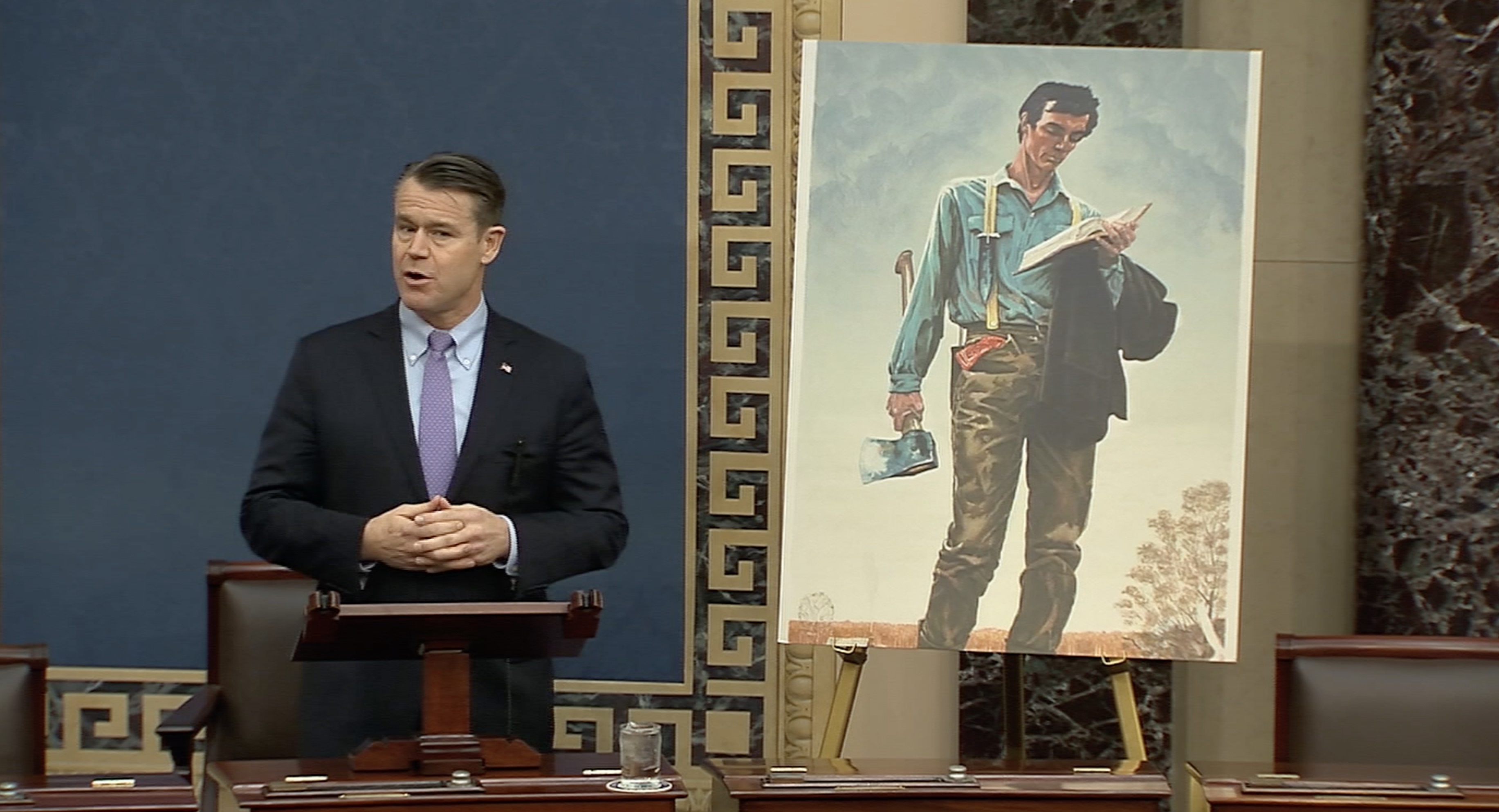Young Commemorates Abraham Lincoln’s Birthday and Hoosier Roots

**Click here or above to watch the full floor speech.**
WASHINGTON, D.C. — To commemorate the 214th anniversary of President Abraham Lincoln’s birth, Senator Todd Young (R-Ind.) spoke on the Senate floor about how Lincoln’s Hoosier roots forged his character.
To watch the full floor speech, click here.
Senator Young’s full remarks, as prepared for delivery:
During the Civil War, Walt Whitman took stock of Abraham Lincoln’s appearance. The President had a face, the poet wrote, like a “Hoosier Michelangelo.”
But Whitman sensed that underneath the lines and crags were wells of wisdom and tact…perfectly suited to the present, hard-earned long ago.
Abraham Lincoln is widely regarded as one of our country’s greatest Presidents, a visionary and inspiring leader who appealed to the highest of American ideals and moved our nation toward a more perfect Union.
Sunday marked the 214th anniversary of Lincoln’s birth, and even today, historians still wrestle with the question – how was a man of such character forged?
The answer can be found in southern Indiana, near the Ohio River.
In 1860, when asked for details of his youth by a biographer, Abraham Lincoln was uncooperative.
It could all, he said, be “condensed into a single sentence…the short and simple annals of the poor.”
“That’s all you or anyone can make of it,” Lincoln insisted.
Mr. President, if you will pardon me, I would like to make a little more of it. Now my colleagues from Kentucky will point out that Lincoln’s birth occurred in their commonwealth. And, as my colleagues from Illinois will likely remind you, when Abraham Lincoln departed for the White House, it was from their state.
I’ll give them this: Lincoln was born in Kentucky, and he made his name in Illinois.
But Abraham Lincoln was a Hoosier.
“It was there I grew up,” he recalled of southern Indiana.
It was there, in Spencer County, “I grew to my present enormous height” he once joked.
True, there’s little left that Lincoln would recognize in our state today.
Just reminders of a once unbroken forest among the low hills…the soil, in it the graves of loved ones…and a great river, separating north from south.
In what does remain though, we can still see where his character was formed, what prepared him for the trials to come.
The Lincolns arrived the same year Indiana became a state. It was still the frontier line, the woods full of bears and the night air alive with the roar of mountain lions.
It was a hard and heartbreaking life, uncertain and often short.
Those years of Abraham Lincoln’s life were characterized by loss, first his mother Nancy and later his sister Sarah…and by constant labor which he grew to so dislike.
Schooling was scarce, opportunities for improvement were few. By his own account, he had no more than a year of formal education.
Decades later, when he recalled life in Indiana, Lincoln wrote “my childhood home I see again, and sadden with the view…”
But he also wrote that among the memories, there was “pleasure in it too.”
There were happy days in the Little Pigeon Creek Community, captivating friends with his homespun stories, and there was the love of a step-mother who nurtured his curiosity.
The sparse schooling he had taught him to write and to read.
He pored over what few books he could find – the Bible, a tattered biography of George Washington borrowed from a neighbor, and, later, a collection of Indiana laws containing the Declaration of Independence and the U.S. Constitution.
And there was the Ohio River, a gateway of possibilities and point of departure to the outside world.
He earned his first half-dollar ferrying passengers on it; he first saw the horror of slavery travelling down it.
By the time he and his family left the Little Pigeon Creek Community in 1830, Lincoln had spent a quarter of his life in Indiana.
He crossed the Wabash River into Illinois a grown man whose heart, touched by grief, was kind, generous and strong…who could spin a yarn like no other…whose intellect far outpaced his meager education…
…and of course he carried with him a great reverence for our Founding’s promise of freedom and a burning desire to rise in life.
Though he was loath to speak of it as he grew older, those 14 years in Spencer County – the sad and joyous – shaped Abraham Lincoln.
The qualities that saved the Union in its time of greatest peril, they were forged in the Indiana wilderness.
In March 1865, only weeks before his death, Lincoln addressed the 140th Indiana Regiment.
The soldiers had recently captured a Confederate Flag in North Carolina, which the president gave to Indiana Governor Oliver Morton.
Lincoln reminded these Hoosiers that he was raised in their state and praised their valor…but he was ever mindful of the Union.
“I would not wish to compliment Indiana above other states,” he said.
For whatever it is worth, I do.
He belongs to all Americans, but Hoosiers can claim a special connection with Abraham Lincoln.
On the occasion of his birth we celebrate the life and legacy of this remarkable Hoosier. He represents the best of us; he was one of us.